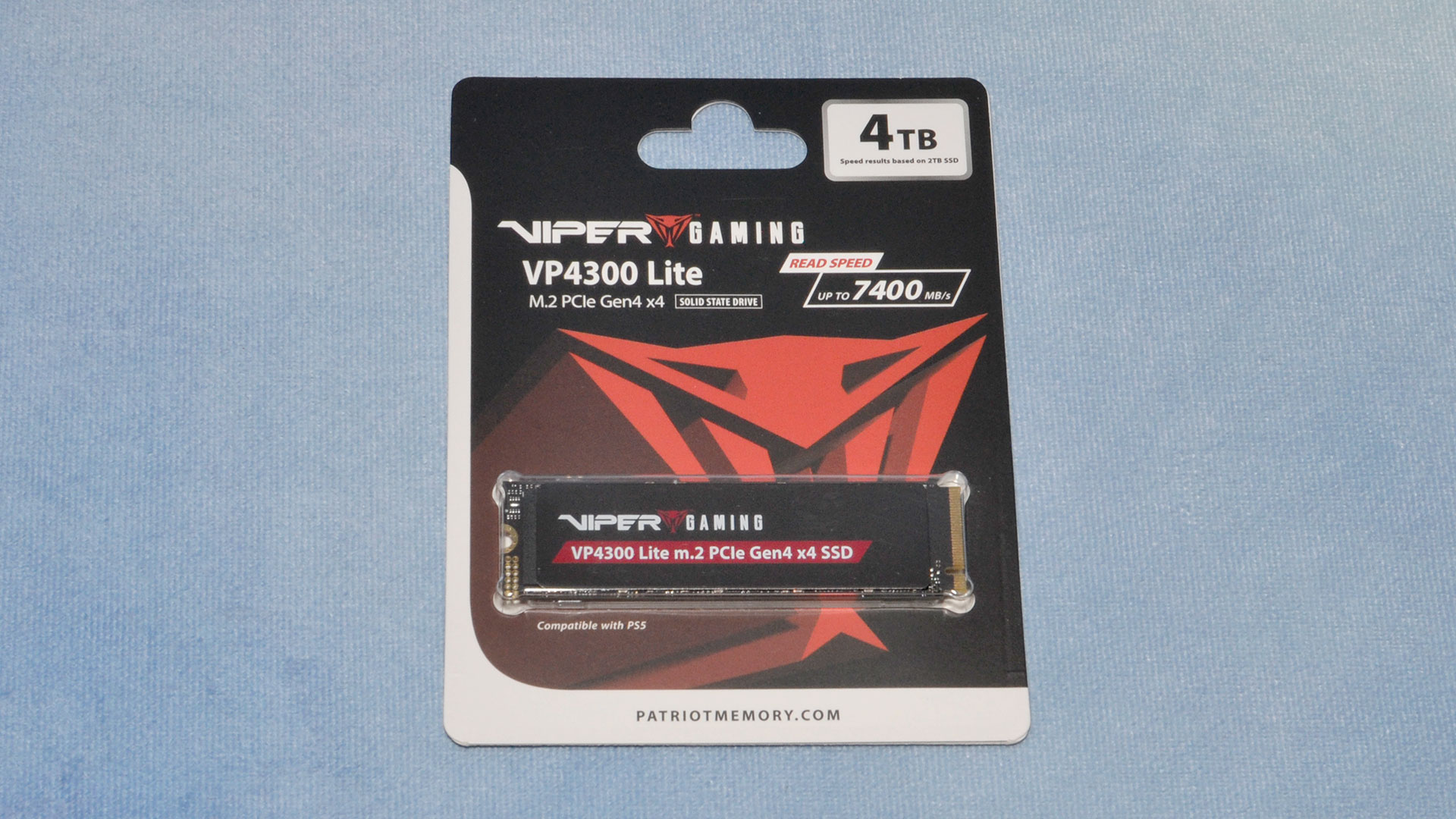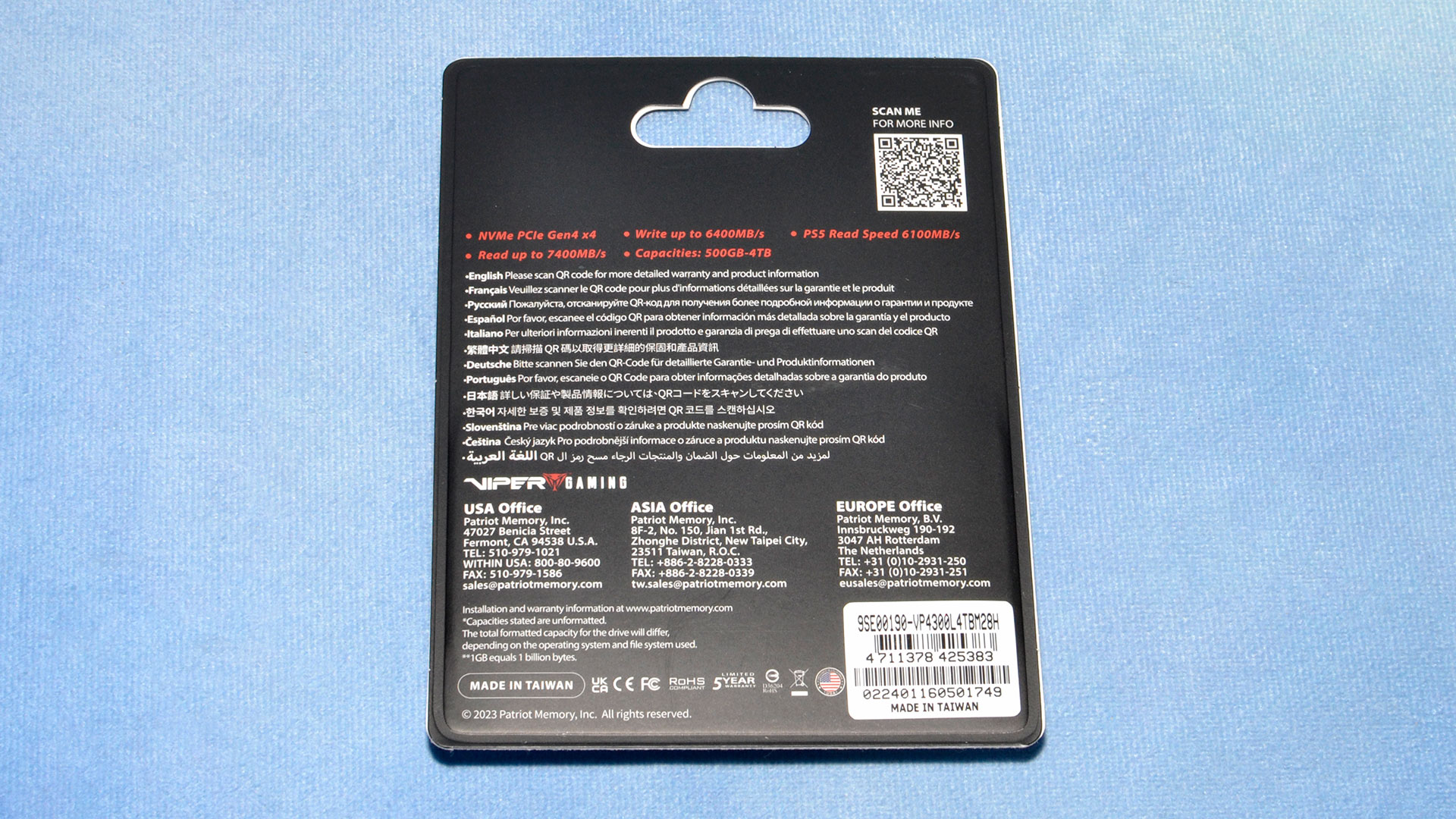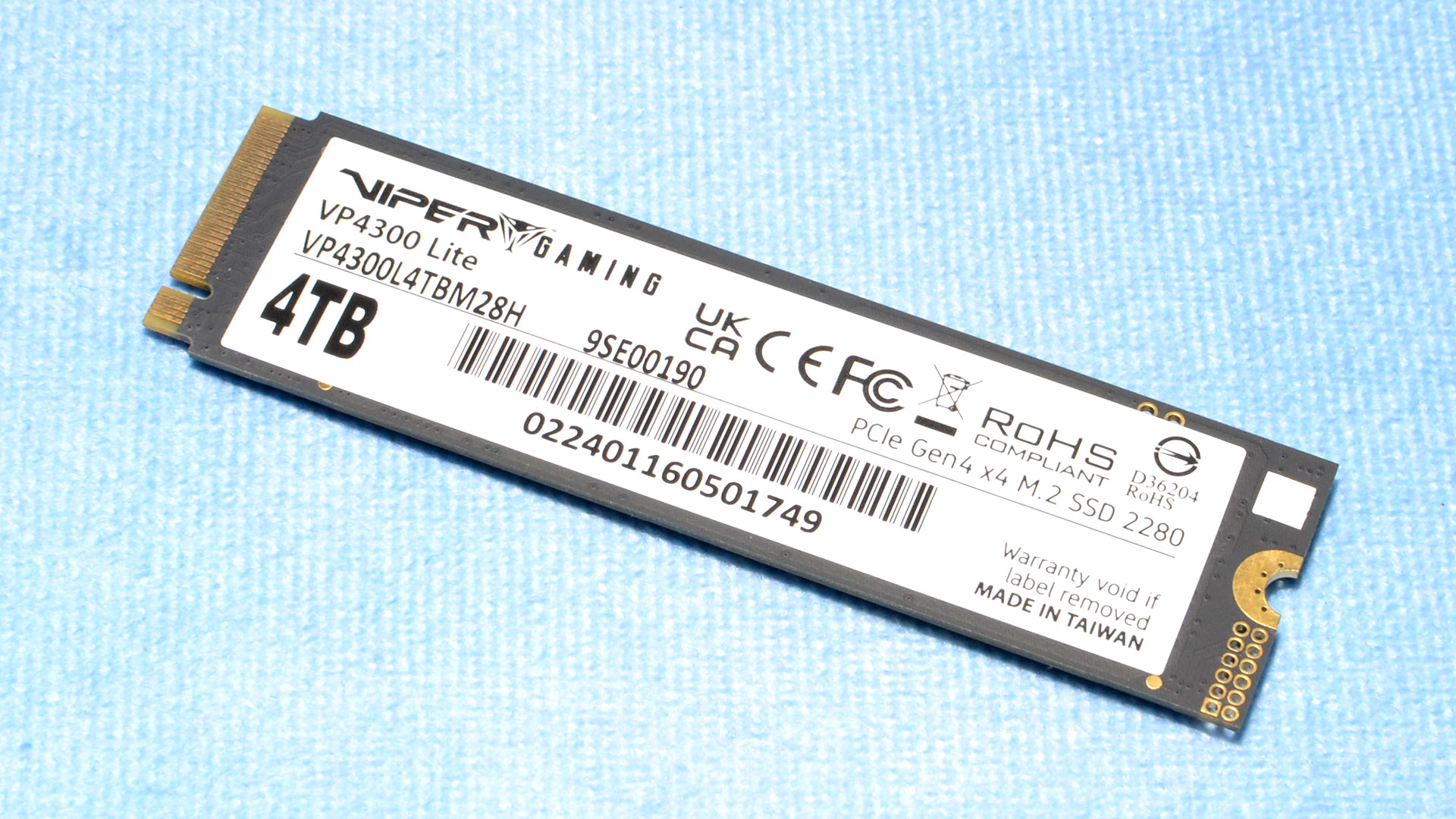Tom’s Hardware Verdict
The Viper VP4300 Lite is a reasonable budget drive but the QLC at 4TB leaves us with some concerns. It’s a worthwhile secondary drive when priced right, but the competition already leverages the same controller and capacity with TLC NAND.
Low pricing at all capacities

Runs very cool and efficient
4TB model uses QLC flash

Similar price to competing 4TB TLC drives
Why you’re able to trust Tom’s HardwareOur expert reviewers spend hours testing and comparing products and services so you can choose the best for you.Find out more about how we test.

Patriot Viper VP4300 Lite Intro, Features, and Specs
The Patriot Viper VP4300 Lite just about has it all, on paper, taking on thebest SSDs. It offers up to 4TB of single-sided goodness capable of over 7 GB/s of performance, and it’s inexpensive on top of all that. It matches its rival and our best budget SSD, theTeamgroup MP44, on almost all marks, and promises to run just as efficiently and cooler if anything. All that sounds great, but there’s one big caveat: The 4TB Viper VP4300 Lite uses QLC flash, albeit the newest available on the market.This is reminiscent of theHP FX700, a drive that pleasantly surprised us. Unlike the FX700, theVP4300 Lite 4TBis actually readily available onAmazonfor $234 and it’s pretty compelling. It launched with TLC flash, like its competitors theAddlink A93andLexar NM790, but our review sample arrived with QLC NAND instead. The drive holds its own where it matters and does so with excellent efficiency and low heat output. That makes it a winner for laptops, HTPCs, the PS5, some portable gaming systems like theAsus ROG Ally X, and as a secondary or gaming drive for desktop PCs. But the switch from the original TLC to QLC NAND still disappoints.
Patriot Viper VP4300 Lite Specifications
The Patriot Viper VP4300 Lite, from here on out known as the VP4300 Lite, is available at 500GB, 1TB, 2TB, and 4TB. At the moment these are going for $46.99, $64.99, $109.99, and $239.99. Assuming the non-4TB SKUs are still TLC-based, this pricing is pretty good. It would probably be the best value for all three of the lower capacities, beating out theTeamgroup MP44, its primary budget rival.However, at 4TB with QLC flash, the VP4300 Lite doesn’t edge out the MP44 and theLexar NM790is close enough to make it the better pick. Those two competitors are likely still TLC-based as both manufacturers have models with the same controller but with QLC flash — the Teamgroup MP44Q and the Lexar NQ790, respectively. We’ve seen similar concerns with previous SSDs, where companies switch from TLC to QLC NAND without changing the model name. It’s a terrible practice as it muddies the waters and potential buyers can’t know for certain which drive they’re getting.The VP4300 Lite is rated for up to 7,400 / 6,400 MB/s for sequential reads and writes and up to 1,000K / 700K random read and write IOPS. The 4TB model takes a small hit to write performance in both categories, an expected side effect of using QLC flash. Patriot might have left open the door to this possibility at launch, given the NM790 andAddlink A93are rated higher.The drive comes with a five-year warranty and 800TB of writes per TB capacity, except for the 4TB SKU that has 2,000 TBW (500TB per TB of capacity). This also points to Patriot leaving open the door to a flash switch as the NM790, MP44, and A93 are all warrantied for 3,000TB at this capacity.
Patriot Viper VP4300 Lite Software and Accessories
Patriot doesn’t have much in the way of software downloads for this drive. It does have a product sheet and a PS5 compatibility list, but neither of these are particularly useful. Firmware updates are available for the 1TB and 2TB models and fix temperature sensor readings. Drives sold today should have updated firmware for the most part, though, and the 500GB and 4TB SKUs do not require this fix.
Patriot Viper VP4300 Lite: A Closer Look
The VP4300 Lite has a basic heat spreading label and a sticker on the back with drive information. This drive is single-sided, which potentially makes it a better choice than double-sided SSDs for use in laptops and the PS5. It can be easier to cool a drive like this and we do recommend a heatsink if you can manage it, in the PS5 or a desktop computer, as the controller is known to act as a hotspot. That said, as we address in the Power Consumption and Temperature section on the next page, this drive runs surprisingly cool, in part due to its use of QLC flash.
We’re familiar with this layout — an SSD controller, four NAND packages to keep the drive single-sided, power management circuitry, and no external DRAM. As mentioned previously, the controller can get a little hot in operation due to its small size and the lack of a metal-based IHS. It’s not likely to overheat but spreading the heat to the NAND packages would probably be a win-win scenario.Taking a look at the controller, we have the Maxio MAP1602, in this case the MAP1602A-F3C U. This is a variation of the base MAP1602 that can be NVMe 2.0 compliant — not a big deal for a consumer SSD — and also handle 4TB of flash. Normally, the controller is made to handle up to four dies for each of its four channels, for a total of sixteen, and with dense 1Tb dies that gets it to 2TB. Allowing for eight dies a channel pushes the limit to 4TB, and with theLexar NM790andAddlink A93we’ve seen that put to good use.The VP4300 Lite then deviates from those SSDs by using QLC rather than TLC flash. This makes it closer to theHP FX700, which we deemed a halfway decent drive. YMTC’s 232-Layer QLC flash is relatively fast and very efficient. This makes it ideal for larger-capacity drives sold at a discount — great especially for a secondary or game drive. We’ve covered this flash before in the linked FX700 review, but the main point is that it uses a four-plane design — unlike the six- or hexa-plane design of the 1Tb/die TLC flash — which suggests optimizations for general performance over raw density or throughput.That said, drives will vary not only in the flash used but also the controller. Given the performance specifications of the VP4300 Lite, a side-grade controller like the Phison E27T is a possible substitution. This is more likely to be the case at lower capacities, that is 2TB and below. If so, the drive might move from the launch YMTC 232-Layer TLC flash to Kioxia’s 162-Layer BiCS6 TLC flash, which is comparable in practice. Performance would be similar to theCorsair MP600 Elite,Inland TN470, Sabrent’s newRocket 4, or in M.2 2230 form factor theCorsair MP600 Minirevision. This would not be a bad change in comparison to the launch hardware and should not be considered a downgrade.

MORE:How We Test HDDs And SSDs
MORE:All SSD Content
Current page:Patriot Viper VP4300 Lite Intro, Features, and Specs
Shane Downing is a Freelance Reviewer for Tom’s Hardware US, covering consumer storage hardware.


